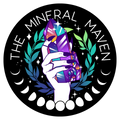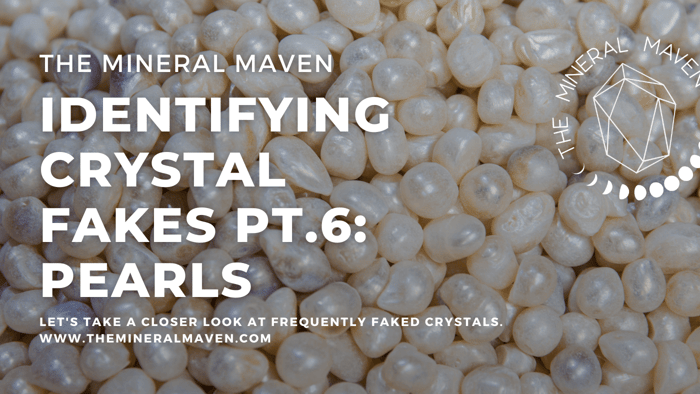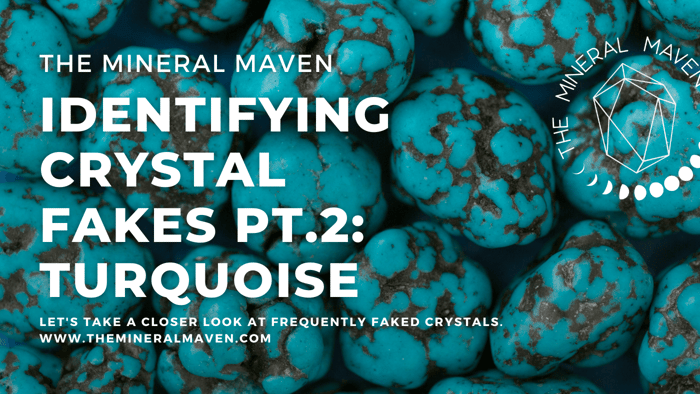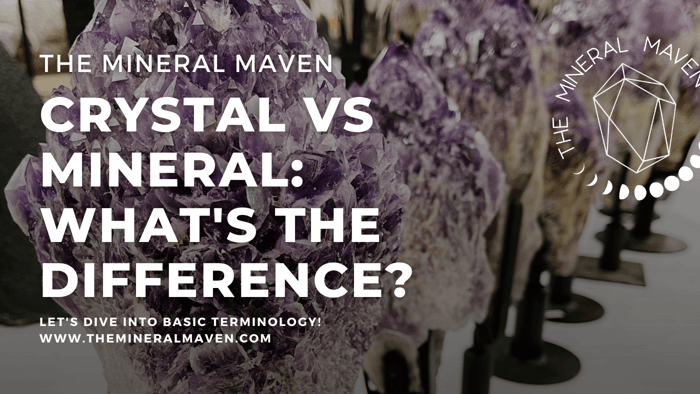Updated 08/06/2024: I've added more information about irradiated quartz sold as citrine because I'm seeing more of it on the market these days.
A reminder that my goal with these Crystal Fakes blog posts is to educate, so you can make informed buying decisions. There is absolutely nothing wrong with choosing to purchase synthetic, altered, dyed or "fake" crystals and working with them. My only issue is the lack of transparency in labelling by vendors and retailers. I always advocate for more transparency in this industry. People have a right to know they're buying irradiated quartz or heated amethyst as opposed to naturally-forming citrine. And the altered stones should be priced accordingly.
This is one of my most frequently asked question topics - how to spot crystal fakes. I've covered them in infographic and Instagram story format before, but this blog format will allow a much deeper dive and easier reference point. Citrine is one of the most commonly faked crystals out there, while this isn't an exhaustive guide to every possible method of faking citrine, it will cover some of the more common fakes we see in the market. So read on for a deep dive on fake citrine and feel free to comment with any follow up questions.
Why is Citrine so commonly faked?
Natural citrine is actually much rarer than you'd think (because the market is saturated with fakes). Because it's rare, it's more expensive and valuable - and this creates an opportunity and incentive for dealers to replicate it with treated stones (and in many cases, attempt to pass it off as natural citrine). In my experience, very rarely is fake citrine ever labelled transparently.
There is a ton of deceiving citrine on the market, and sometimes retail sellers (crystal shops) don't even know that what they're selling is treated because their suppliers have lied to them about it. Unfortunately, this is the nature of a global industry without much (if any) regulation paired with an increased demand for aesthetic and collectible healing crystals.
Most common "fake": heat-treated amethyst
And I use "fake" in quotes because it's still a natural quartz stone, and it's still technically citrine. Natural citrine is formed when quartz is heated by the Earth over geologic periods of time to achieve the natural champagne to honey hue. The difference is that these are formed and mined as amethyst crystals, and then heat treated by people to mimic citrine. They have been altered by humans instead of forming as citrine naturally, they are artificially treated.
In my experience, these are some of the easiest "fakes" to identify because of the following indicators:
- The cluster formation - it's distinctly amethyst, natural citrine does not form in clusters that look like this (to see amethyst compared to natural citrine, check out the infographics below).
- Unnatural hue of yellow/orange - natural citrine is more muted and softer hues of champagne/chardonnay (and sometimes a smoky golden hue), and not so much cheese cracker, lemon yellow, or burnt orange.
- The opaque white color at the base of the crystal - a signature of amethyst. Natural citrine crystals are more uniform in color, so the opaque white beneath the caps of yellow or orange is a tell-tale red flag.
- The price - these are usually much more affordable than natural citrine because amethyst is very common and a cheaper material. If it seems too good to be true, it probably is.
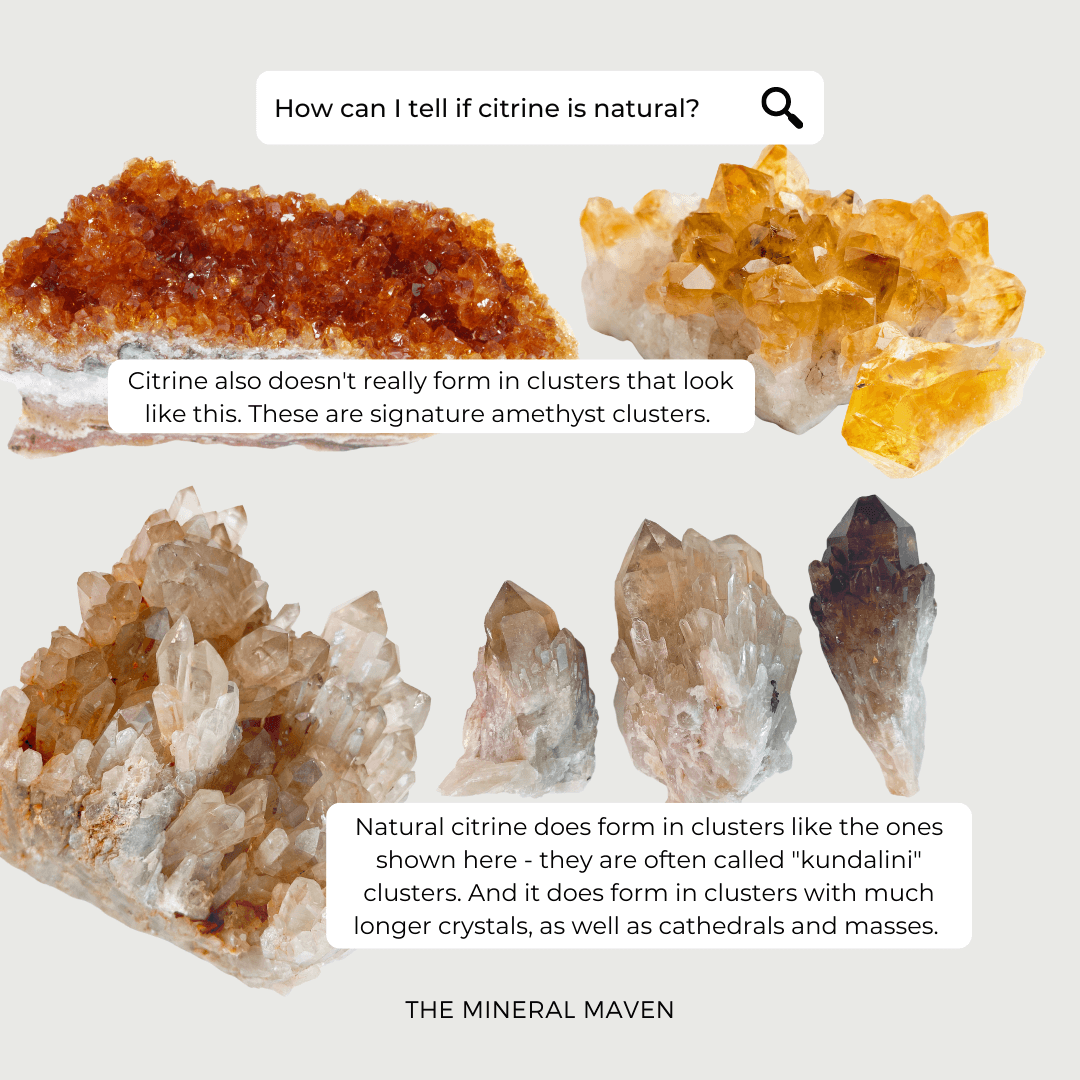
Other signs of faked citrine
Heated amethyst is certainly the most common citrine "fake" I've seen at gem shows and online, but there are other methods of faking citrine and some are becoming quite challenging to distinguish from natural pieces.
The most common fake techniques aside from the baked/heat-treated amethyst are dyed quartz/glass, artificially coated quartz/glass, and irradiated quartz.
Some red flags to look out for that are hallmarks are fake citrine:
- Inconsistent coloring - natural citrine is typically uniform in color throughout the piece, and dyed "citrine" can have weird stripes or spots that are absent of color. And the artificially coated pieces will look kinda like aura quartz but with yellow/gold/orange.
- Bubbles - there should typically not be visible bubbles in quartz unless it contains an enhydro (which would make it even more expensive). Bubbles can indicate dyed glass, which is a common way to fake citrine.
- Weird colors - baked amethyst is typically yellow crayon, cheddar or burnt orange hued; dyed quartz is usually an oddly vibrant yellow; and irradiated quartz is usually a yellowish green (see photo below).
- Locality - most natural citrine on the market (in the spiritual space) is from Brazil or Africa (specifically Zambian, Congolese, and Madagascan citrine), so if it's from another locality then that can be a red flag.
- Price - natural citrine is rare and more expensive. If you're finding cheap citrine, it is almost 100% guaranteed it's a fake. I'd also consider size vs. price. A 1kg cluster of citrine for $34 on wish.com is a red flag.
To be clear: if it's a really good quality and well done fake of polished citrine, only an expert or lab test can truly distinguish if it's been treated. So I can't help differentiate these in this blog post, but I will take it as an opportunity to urge you to only buy citrine from retailers you trust.
Buyer beware: irradiated quartz
I'm seeing this more and more often at gem shows and in the online space, and nearly all of them are being mass produced in China.
Irradiated citrine is more difficult to spot than baked amethyst citrine to the untrained eye. Folks with a lot of experience can often tell the difference because there are slight yellowish-greenish undertones that natural citrine simply doesn't have. Natural citrine will always have a warmer/brownish undertone like honey, maple, champagne, etc.
There are two primary irradiation methods:
- One is to retroactively irradiate clear quartz to create the yellow coloring. These can be especially tough to spot because they can have excellent clarity and can be a more pale yellow in color. They still usually have a slight tinge of unnatural yellow or neon/greenish, and are often marketed as natural citrine or "lemon quartz."
- The other method is to radioactively irradiate smoky quartz. These usually have a stronger greenish/neon undertone and can have cloudy inclusions/"phantoms" that are more common in smoky quartz (and incredibly rare in natural citrine).
The photo below is an excellent example of irradiated smoky quartz citrine to give you a sense of the undertones that I'm referring to, but it is often even more challenging to spot in lighter irradiated clear quartz specimens or higher quality pieces with excellent clarity. This example photo is a bit extreme in coloring and there is obvious smoky quartz still present in most of the specimens, but hopefully it helps you learn what to look for.

Irradiated smoky quartz citrine for sale. Labelled as citrine with no disclosure that this is treated, and priced at hundreds of dollars per point.
Characteristics of natural citrine
Here is a quick run down of what to look for when vetting natural citrine:
- Consistent/uniform coloring - see the infographic below with examples from 3 different localities for examples of how the coloring is uniform and consistent throughout the piece of citrine.
- Clarity - natural citrine is usually relatively clear. Some inclusions are natural, but if it's super cloudy or has a ton of white streaks inside it can be a red flag.
- Natural hue - ranging from champagne, to a warmer chardonnay, ginger ale, more of a golden hue, to even smoky golden. The infographic below beautifully illustrates the range of colors.
- Natural citrine form/cluster - whether a "kundalini" cluster like the Congolese citrine shown below, or a cluster of elongated Zambian citrine crystals, these are natural citrine cluster formations. Amethyst-type clusters are not how citrine is naturally found.
- $$$ - natural citrine costs more than fake citrine. The pricing should be on par with its rarity, quality, and hue. If it's super cheap, that's a red flag.
- Locality - the more specific the better. When vetting sourcing for frequently faked stones, nothing is more important than transparency. So hopefully they're specific about where this citrine is from (at least down to the country of origin). That being said - Brazilian amethyst is still frequently treated to create fake citrine - so locality isn't a sure thing.
- Sourcing - a source you can trust. Someone who is honest and transparent in their sourcing and treatments. Mostly don't just trust any ol' listing that seems too good to be true on wish.com or etsy.

I hope this is a helpful place to start when endeavoring to purchase natural citrine (naturally forming citrine!). Please don't hesitate to drop questions below if there's anything else I can clarify for y'all, and subscribe to my newsletter (website footer) so you don't miss Crystal Fakes part 2! PS. you can snag some natural citrine with the products below.
$10.00
This listing is for (1) polished natural Zambian citrine point, which will be intuitively selected. As these are natural stone, they may differ in size and appearance from those pictured. Though these are beautiful quality, they are not cut or shaped points, but natural points and… read moreZAMBIAN CITRINE POINT (POLISHED)

$16.00
This listing is for (1) polished natural Zambian citrine coin (cross-section of a point), which will be intuitively selected. As these are natural stone, they may differ in size and appearance from those pictured. Though these are beautiful quality, they are… read moreZAMBIAN CITRINE COIN (POLISHED)

